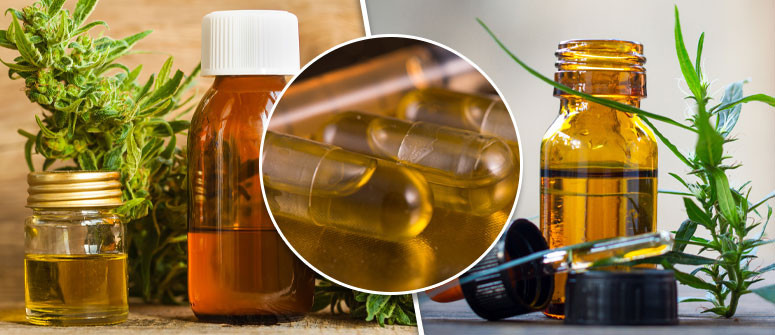The 3 most popular cbd extraction methods

Read about the most common methods for extracting cannabinoids and CBD oil from the cannabis plant, with their pros and cons.
CBD AND THE WORLD OF EXTRACTION
CBD (cannabidiol) is a cannabinoid gaining major traction within the cannabis world and beyond for its medicinal potential. Many benefits have been identified, including anti-inflammatory, neuroprotective, antioxidant, and anticonvulsant actions, to name but a few. Not only does CBD offer these impressive effects, it’s also non-intoxicating, which makes the molecule user-friendly to a much wider consumer base.
A huge industry is developing around this cannabinoid. Today, many products, including foods and supplements, are available that make it easy for consumers to fit CBD into their everyday lives. This booming industry and the subsequent innovation it's experiencing has led to novel, refined extraction methods used to isolate and harness cannabinoids like CBD, terpenes, and more from cannabis plant material.
With that said, there is still room for old-school products. CBD users with a small bit of knowledge can make a half-decent cannabinoid extraction at home in their kitchen with the correct equipment.
Most CBD companies source CBD from hemp flowers, stems, and leaves, especially those in Europe, as this industrial crop has extremely low THC values and is the only legal option. Desired constituents such as CBD and terpenes are sourced from this plant matter using a variety of extraction techniques.
When searching for CBD products, users will often discover that two primary forms exist. Isolates and full spectrum extracts. Although isolates offer higher levels of CBD, full spectrum extracts contain a lot of other goodies that work in a synergistic manner with cannabidiol. This article will focus on how full spectrum formulations are created in both a commercial and amateur setting.
Let’s take a look at the three of the most common extraction techniques. Each method has its advantages and disadvantages, different costs, and different levels of purity, potency, and quality.
LIQUID SOLVENT EXTRACTION
This type of extraction involves using a liquid solvent such as alcohol to extract cannabinoids and other desired molecules from cannabis and hemp flowers. It’s in a solvent's nature to dissolve molecules, but unlike water, alcohol is extremely efficient at dissolving cannabinoids. Typical solvents used in this process include grain alcohol, isopropyl alcohol, and even naphtha.
Alcohol has been used in traditional medicine systems for centuries, possibly millennia, to extract chemical constituents from plants in order to craft tinctures. What makes a solvent extract unique is that the solvent is evaporated after the desired molecules have been extracted. This process has been popularized in recent times by Rick Simpson, who advocated for this method as a DIY way to make cannabis oil at home.
The advantage of this method is that it’s relatively cheap and requires little to no special equipment. In fact, you can probably find everything you need for this extraction at home in your kitchen cupboards, perhaps minus the extremely strong booze.
Solvent extraction can be performed using a rice cooker, a hot plate, and a few glass containers and pieces of cutlery. However, more sophisticated procedures utilize distillers.
The disadvantages of this method are, of course, safety issues. The solvents used in this process are highly flammable and have been the cause of explosions in multiple labs and kitchens attempting this technique. It’s advised to boil off the alcohol outside, especially if using the more primitive rice cooker technique. Still, this must be done away from any risk of naked flames.
Another disadvantage is that solvent residue can remain behind after the evaporation process if not performed properly—not something you want entering your body with each dose.
FOOD-SAFE OIL EXTRACTION
This method involves extracting CBD and terpenes using natural plant oils as a solvent. Products such as hemp seed oil, olive oil, and coconut oil are quite effective at extracting cannabinoids from plant material because these compounds are lipophilic, meaning they are absorbed well by fat.
This extraction technique is employed by some amateurs because of its gentle and natural approach. There is no fear of harmful residues being left behind, and healthy plant oils add nutrients such as omega fatty acids into the mix.
However, the fact that food-safe oil extractions aren’t as aggressive means it takes longer to complete the process. What’s more, the end result isn’t as concentrated. During liquid solvent extractions, the alcohol is boiled off, leaving behind a tar-like substance that is extremely rich in cannabinoids and terpenes. Plant oil extractions are more like tinctures in this sense. Another downside is that these preparations will degrade faster over time and must be stored correctly. Small glass jars will certainly help to extend shelf life.
CO₂ EXTRACTION
CO₂ extraction harnesses desired molecules from cannabis plants using supercritical carbon dioxide. CO₂ usually behaves either as a gas or solid, but can be turned into a liquid-like state when subject to its critical temperature and critical pressure. Supercritical CO₂ is extremely efficient at extracting cannabinoids, terpenes, and just about anything. The substance is able to pass through plant matter because of its gas-like properties, and dissolves constituents via its liquid aspects.
Such an effective and advanced technique comes at a price. CO₂ extraction is definitely the most complex and financially draining option. It’s a superb investment for large producers, yet unrealistic for the average CBD consumer.
WHICH IS THE BEST EXTRACTION METHOD?
This question has numerous factors, and depends on what one has access to if looking to make their own extracts at home. However, as a consumer, CO₂ extraction appears to be the best option and produces superior CBD products. The ability of this method to extract active constituents without leaving behind any harmful residue is unparalleled. This method creates a clean and safe full spectrum oil rich in CBD and beneficial terpenes.
If you’re looking for CBD products made with state-of-the-art CO₂ extraction technology, those available at Cibdol are the way to go. After creating a crude paste using CO₂ extraction, Cibdol goes the extra mile and enriches it with extra terpenes and high-grade olive oil, hemp seed oil, or black cumin seed oil.
.jpg)


.jpg)
